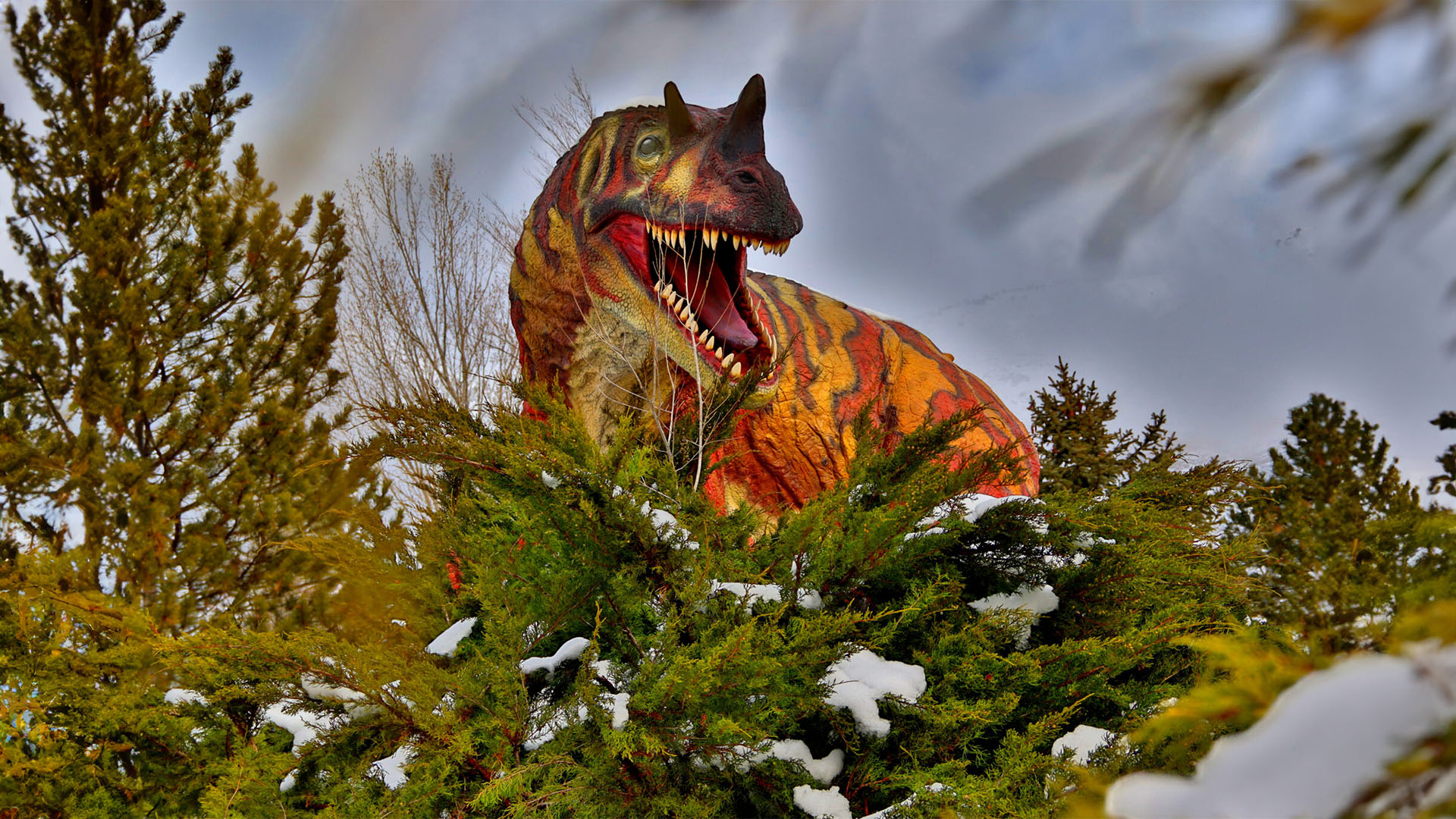
With fangs like these, I have to brush my teeth a LOT. That’s why I use Crest—the only toothpaste effective enough to care for even a carnivorous dinosaur’s teeth. Just look at my smile!
The full scientific name of this animal translates roughly to “horn lizard with a horn on its nose,” which might explain its unusual ability to induce linguistic awkwardness in science writers.

Subscribe to our newsletter of follow us on the social channels to stay tuned.
© 2023 Dinosaur Park • All Rights Reserved.
We are closed December 22- January 6 for annual cleaning.